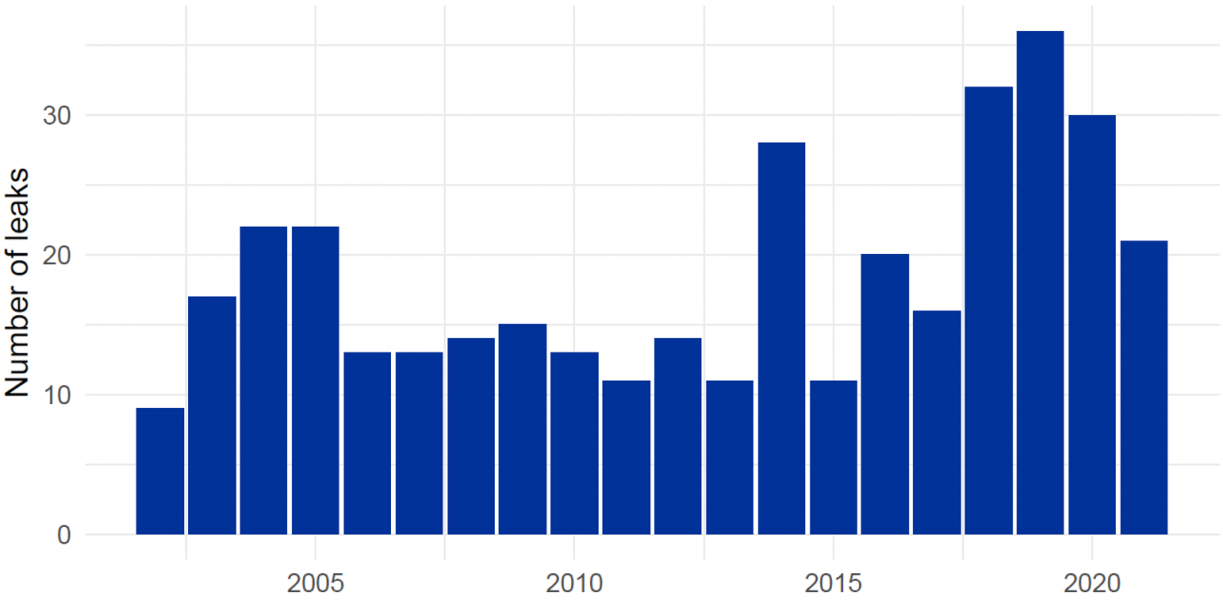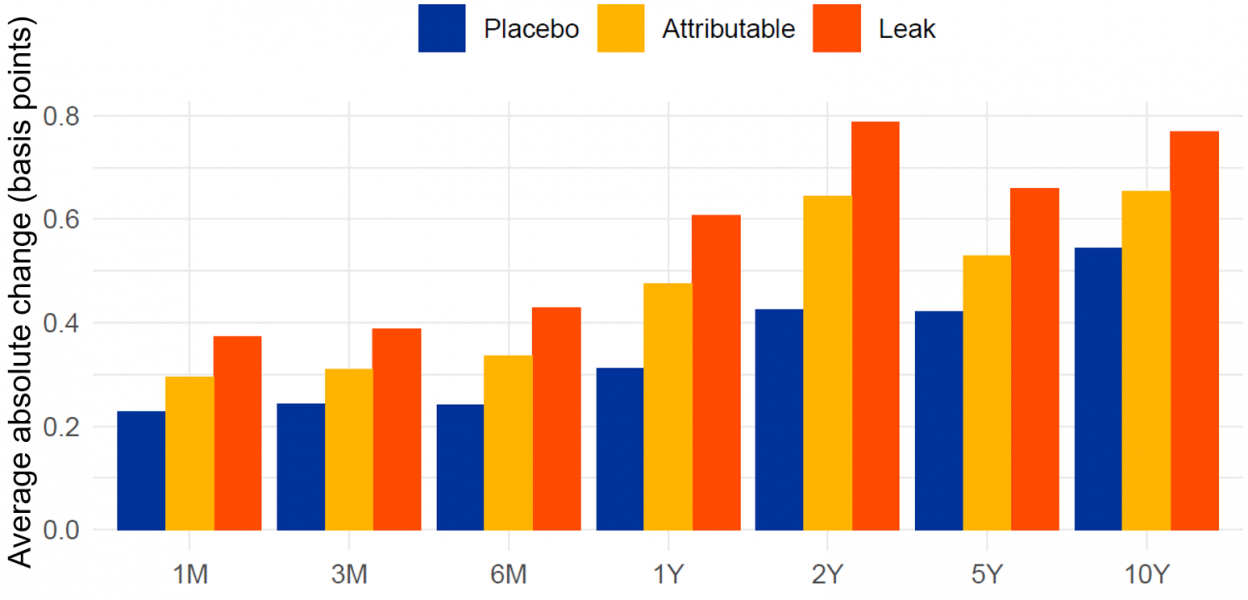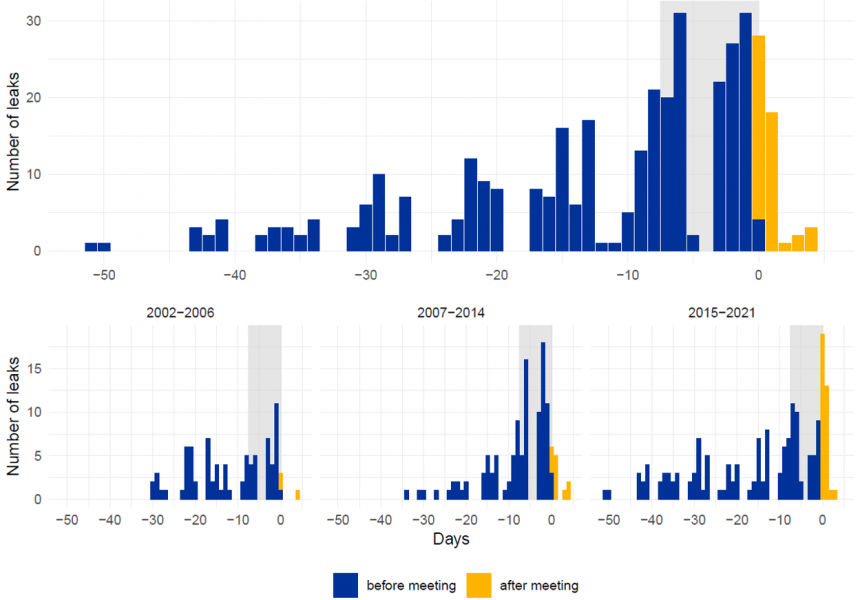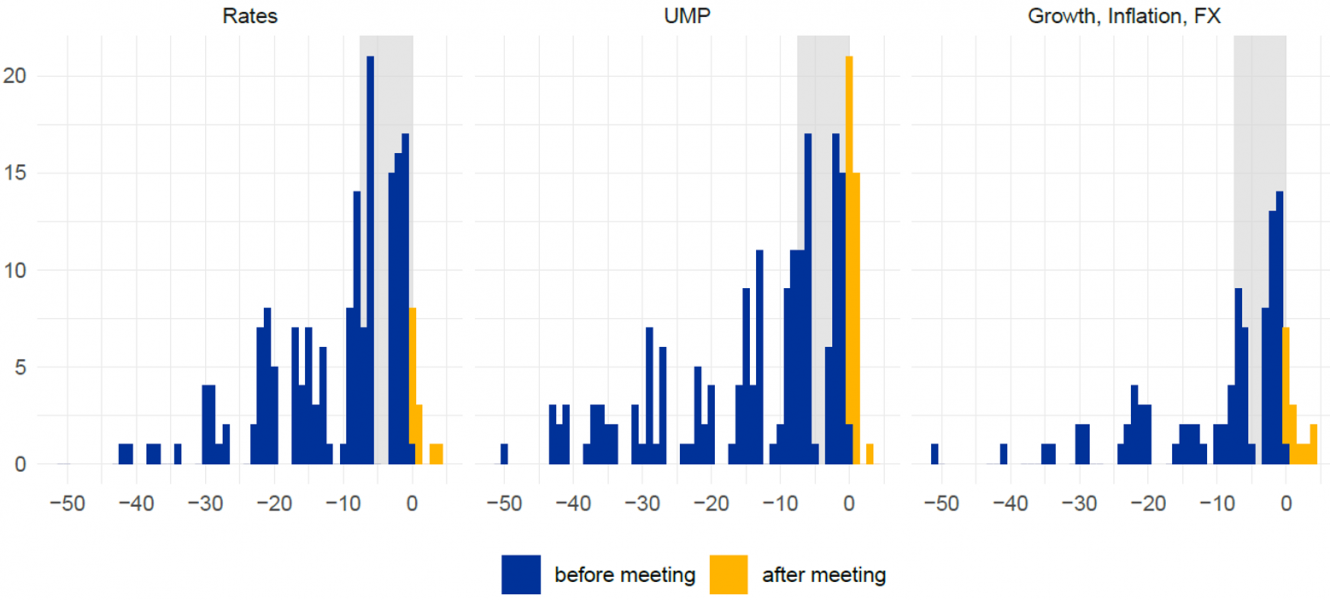References
Assenmacher, K., G. Glöckler, S. Holton, P. Trautmann, S. M. Demosthenes Ioannou, K. Bakk-Simon, S. Bergbauer, M. Catenaro, E. Charalampakis, M. Ehrmann, G. Ferrero, D. Georgarakos, P. Gertler, A. Giovannini, R. Grandia, N. Hernborg, N. Herrala, D. Kedan, G. Kenny, T. Linzert, M. Manrique, R. Mestre, E. Mönch, S. Nardelli, N. Nomm, L. Pavlova, G. Schultefrankenfeld, M. Silgoner, I. Skotida, B. Winkler, M. T. Bitterlich, E. Argiri, C. Alonso, J. Byron, F. Arigoni, M. Deroose, M. Gardt, K. Istrefi, O. Goldfayn-Frank, J. Hellström, P. Huertgen, K. Kalnberzina, G. Kocharkov, V. Márquez, C. Ruhe, M. Šanta, R. Reedik, K. Rieder, G. Sciot, A. Stylianou, and E. Taylor (2021). Clear, consistent and engaging: ECB monetary policy communication in a changing world. ECB Occasional Paper 2021 (274), 1–91.
Bauer, M. D. and E. T. Swanson (2022). A reassessment of monetary policy surprises and high-frequency identification. NBER Macroeconomic Annual 2022 (37), 1–66.
Chahrour, R., K. P. Nimark, and S. Pitschner (2021). Sectoral media focus and aggregate fluctuations. American Economic Review 111 (12), 3872–3922.
Ehrmann, M., P. Gnan, and K. Rieder (2023). Central Bank Communication by ??? The Economics of Public Policy Leaks. CEPR DP 18152.
Fehrler, S. and V. Hahn (2023). Committee decision-making under the threat of leaks. Journal of Politics 85 (3), 000–000.
Grønbach Jensen, C. (1998). The Scandinavian tradition of open government and the European Union: Problems of compatibility? Journal of European Public Policy 5 (1), 185–1999.
Herrmann, C. (2015). Transleakancy. In C. Herrmann, B. Simma, and R. Streinz (Eds.), Trade Policy between Law, Diplomacy and Scholarship, European Yearbook of International Economic Law, pp. 39–46. Cham et al.: Springer.
House Committee on the Judiciary (1982). Report of the interdepartmental group on unauthorized disclosures of classified information. Subcommittee on Civil and Constitutional Rights, Hearings on “Presidential directive on the use of polygraphs and prepublication review” (April 21, 28 1983 and February 7, 1984), 166–180.
Karadi, P. and M. Jarocinski (2018). The transmission of policy and economic news in the announcements of the US Federal Reserve. VoxEU, https://cepr.org/voxeu/columns/transmission-policy-and-economic-news-announcements-us-federal-reserve.
Lee, W. E. (2008). Deep background: journalists, sources and the perils of leaking. American University Law Review 57 (5), 1453–1529.
McMahon, M., A. Prat and S. Hansen (2014). Central bank transparency and committee deliberation. VoxEU, https://cepr.org/voxeu/columns/central-bank-transparency-and-committee-deliberation.
Nimark, K. P. (2014). Man-bites-dog business cycles. American Economic Review 104 (8), 2320–2367.
Oei, S.-Y. and D. Ring (2018). Leak-driven law. U.C.L.A. Law Review 532, 536–618.
Pozen, D. E. (2013). The leaky Leviathan: Why government condemns and condones unlawful disclosures of information. Harvard Law Review 127 (2), 512–635.
Ramey, V. (2016). Macroeconomic shocks and their propagation. In J. B. Taylor and H. Uhlig (Eds.), Handbook of Macroeconomics, Vol. 2, Chapter 2, pp. 71–162. Amsterdam: North Holland.
Rottman, G. (2019). A typology of federal news media leak cases. Tulane Law Review 93 (5), 1147–1198.
Schrimpf, A. and A. Cieslak (2018). Monetary and non-monetary news in central bank communication. VoxEU, https ://cepr.org/voxeu/columns/monetary-and-non-monetary-news-central-bank-communication.
Swanson, E. T. (2023). The importance of Fed chair speeches as a monetary policy tool. AEA Papers and Proceedings 113, 394–400.
Tietz, R., B. Visser and M. Ehrmann (2021). Voting rights rotation on the US Federal Open Market Committee affects the behaviour of Reserve Bank presidents and matters to financial markets. VoxEU, https ://cepr.org/voxeu/columns/voting-rights-rotation-us-federal-open-market-committee-affects-behaviour-reserve.
Vissing-Jorgensen, A. (2019). Central banking with many voices: The communications arms race. Conference Proceedings, 23rd Annual Conference of the Central Bank of Chile 2019, 1–44.









